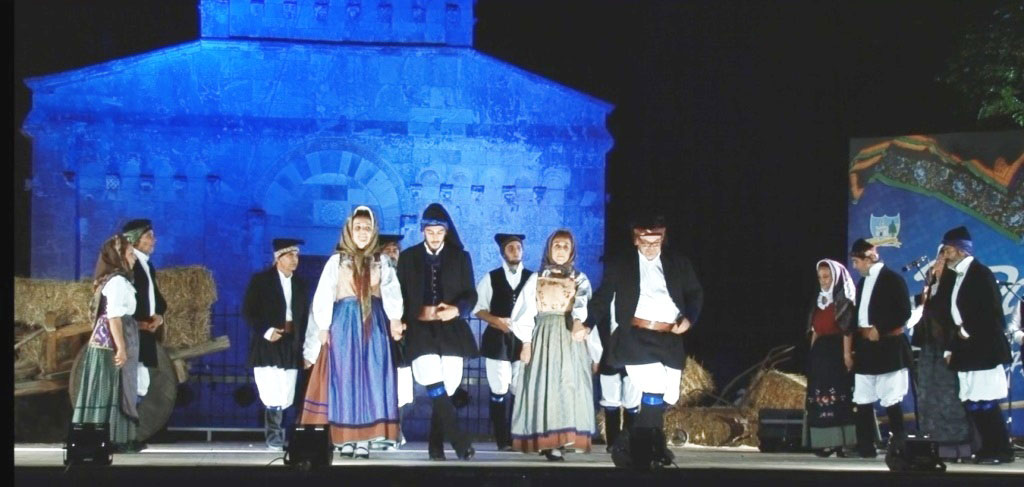The dance’s repertory
The folk group “pro Loco Uta” is in the habit of proposing, during its performances, the characteristic dances of its town and of the zone of Cagliari’s Campidano.
The “ballo campidanese” refers to an homogeneous artistic area that includes as well as the Cagliari’s Campidano, also the whole southern part of the island, above all the part tied to the presence of the launeddas (to know more read “musical instruments”).
Typical of this dance are the expressions, often severe and rigorous, that do not leave space, during the execution, to any joyful expression. Because of that in 1825, Alberto la Marmora wrote: “Nothing is comparable to the solemnity with which southern Sardinians do this dance, often it is possible to say that they do not like to do it, instead is the contrary because in all the villages of Cagliari’s Campidano young people put themselves down for paying a player of the Sunday”.
The sources of the dance in Sardinia >>
The dances performed a:
Ballu Sardu: (Ancient Sardinian Dance)

It has a dance that aims representing the ritual community dance that was originally done in the square in owr town. It is a dance without choreography; actually, a choreography would not appear very faithful to the tradition. The spontaneity and the improvisation of the dancers are aimed following the “nodas” of the launeddas or the accordion. The dancers, by their ability, propose the steps of “su connotu” of the elderly, like: s’intrada, pass’e tresi, pass’e dusu, s’and’e torra, sa torrada de su passu, passu appuntau, passu frorigiau and passu traballau.
The dancers dance in counterpoint to the rhythm, danced on the point and shuffling the feet. During the performance they had not to lose dance’s rhythm and measure. As regards women’s movements, appear both the austerity and the seriousness ,in the step and in the execution.
The dance so executed is the exaltation of the traditional Ballo Campidanese.
Ballu de sa Gruxi (Dance of the cross)
It is a dance with the “passo campidanese” (typical step, characterized by a step with beat every two times), a severe and austere step. The choreographic elaboration was realized for the first time in Uta at the end of the Sixties. The choreography consists in the movement of a Latin cross: the long arm is formed by the women (arranged in an Indian file) while the short ones by the men separated by a woman. They move ¼ of turn every three beats.
Ballu de su Muccadori: (Dance of the handkerchiefs)
Typical dance of the Campidano of Cagliari. It has been introduced in a relatively recent time. It is considered a courting dance because the man dances with two single girls; as sign of respect for the girls, it is avoided the direct contact between the dancers, which happens just through a handkerchief.
As well as the previously mentioned dances, our folk group performs also some dances traditionally belonging to other zones of Sardinia, but now part of the repertoire of Campidano’s groups. Among them, we mention:
- Ballittu and Dillu (coming from the central Sardinia, Barbagia, Baronie, Goceano)
- Danza (with a regional diffusion)
- Passu Torrau (considered by many experts coming from Mamoiada, but danced in the whole Barbagia with little variations). Now it is part of the folk groups’ repertory of the whole Sardinia


